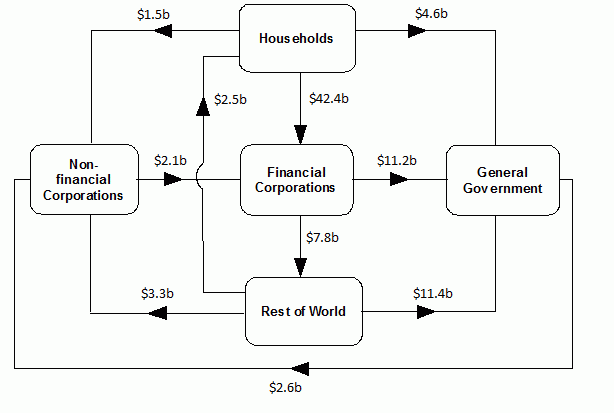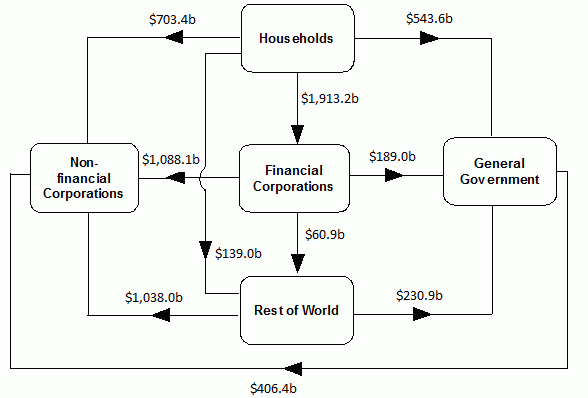Graph 2 - Net financial investment (net lending (+) / net borrowing (-))
[["Sep-99","Dec-99","Mar-00","Jun-00","Sep-00","Dec-00","Mar-01","Jun-01","Sep-01","Dec-01","Mar-02","Jun-02","Sep-02","Dec-02","Mar-03","Jun-03","Sep-03","Dec-03","Mar-04","Jun-04","Sep-04","Dec-04","Mar-05","Jun-05","Sep-05","Dec-05","Mar-06","Jun-06","Sep-06","Dec-06","Mar-07","Jun-07","Sep-07","Dec-07","Mar-08","Jun-08","Sep-08","Dec-08","Mar-09","Jun-09","Sep-09","Dec-09","Mar-10","Jun-10","Sep-10","Dec-10","Mar-11","Jun-11","Sep-11","Dec-11","Mar-12","Jun-12","Sep-12","Dec-12","Mar-13","Jun-13","Sep-13","Dec-13","Mar-14","Jun-14","Sep-14","Dec-14","Mar-15","Jun-15","Sep-15","Dec-15","Mar-16","Jun-16","Sep-16","Dec-16","Mar-17","Jun-17","Sep-17","Dec-17","Mar-18","Jun-18","Sep-18","Dec-18","Mar-19","Jun-19","Sep-19"],[[-10.474],[-6.6459999999999999],[-7.2249999999999996],[-7.5730000000000004],[-6.327],[-4.4850000000000003],[-3.4129999999999998],[-3.1389999999999998],[-3.633],[-4.7549999999999999],[-4.5910000000000002],[-6.5199999999999996],[-12.537000000000001],[-9.1989999999999998],[-9.1829999999999998],[-10.949],[-12.212],[-11.48],[-11.638],[-11.391999999999999],[-15.946999999999999],[-16.163],[-14.183],[-11.805],[-15.224],[-14.137],[-13.335000000000001],[-13.35],[-15.346],[-15.951000000000001],[-16.286000000000001],[-16.218],[-20.027999999999999],[-22.132000000000001],[-20.279],[-15.032999999999999],[-14.135],[-8.4019999999999992],[-7.1559999999999997],[-14.795],[-18.925000000000001],[-23.227],[-20.420999999999999],[-6.4020000000000001],[-11.699],[-13.868],[-13.162000000000001],[-8.0090000000000003],[-10.59],[-13.709],[-16.431000000000001],[-10.106],[-19.253],[-17.960999999999999],[-10.865],[-11.300000000000001],[-17.329999999999998],[-11.292999999999999],[-11.523999999999999],[-9.4589999999999996],[-18.106999999999999],[-12.800000000000001],[-12.167999999999999],[-19.109999999999999],[-24.904],[-22.132000000000001],[-17.198],[-16.004999999999999],[-15.824999999999999],[-4.6859999999999999],[-11.436],[-9.8130000000000006],[-16.885999999999999],[-16.861000000000001],[-10.577999999999999],[-13.821999999999999],[-13.244999999999999],[-7.2409999999999997],[-3.8860000000000001],[2.6200000000000001],[6.2199999999999998]],[[-19.829000000000001],[-10.819000000000001],[-7.0679999999999996],[-26.734999999999999],[-16.033000000000001],[-18.625],[-19.693000000000001],[-11.265000000000001],[-20.201000000000001],[15.752000000000001],[-3.9039999999999999],[-31.356000000000002],[-5.1609999999999996],[-4.8860000000000001],[-18.591000000000001],[0.89900000000000002],[-23.550999999999998],[-17.838999999999999],[-23.437999999999999],[-19.085999999999999],[-18.454000000000001],[17.579000000000001],[-12.016],[22.562999999999999],[-27.242999999999999],[-32.131999999999998],[-22.241],[-24.846],[-26.091999999999999],[-10.445],[-26.855],[-32.634999999999998],[-38.93],[-32.591999999999999],[-26.492000000000001],[-6.0739999999999998],[-40.460000000000001],[-26.074999999999999],[-5.4340000000000002],[13.632],[-35.167000000000002],[-11.627000000000001],[0.92200000000000004],[24.088000000000001],[-3.2629999999999999],[-7.1749999999999998],[23.835999999999999],[10.138999999999999],[1.794],[0.47499999999999998],[-36.421999999999997],[1.462],[-7.5410000000000004],[1.4419999999999999],[-32.975000000000001],[-37.908999999999999],[-11.375],[-65.335999999999999],[-20.123999999999999],[-24.856999999999999],[-7.899],[0.39800000000000002],[-13.568],[-37.941000000000003],[-62.761000000000003],[-44.258000000000003],[-22.013000000000002],[5.0499999999999998],[-3.3610000000000002],[-7.5220000000000002],[-21.404],[20.925999999999998],[-9.4410000000000007],[-38.811999999999998],[-24.861000000000001],[-22.864999999999998],[-25.376999999999999],[-4.4429999999999996],[-14.074999999999999],[14.896000000000001],[-7.71]],[[-1.0600000000000001],[-7.3019999999999996],[-2.3940000000000001],[13.411],[12.222],[12.503],[6.2869999999999999],[-7.1959999999999997],[23.689],[-22.361999999999998],[-2.5379999999999998],[26.422000000000001],[7.2389999999999999],[-23.893999999999998],[3.0630000000000002],[-8.8190000000000008],[7.3620000000000001],[4.3609999999999998],[6.8499999999999996],[4.8179999999999996],[-3.3460000000000001],[-32.999000000000002],[-3.9199999999999999],[-27.687000000000001],[9.0540000000000003],[12.44],[-20.681000000000001],[3.2440000000000002],[-7.2590000000000003],[-14.768000000000001],[5.5359999999999996],[-16.942],[-5.0250000000000004],[-0.96799999999999997],[-12.161],[-17.43],[-10.656000000000001],[-17.489000000000001],[-1.133],[-30.047000000000001],[30.181999999999999],[-4.2889999999999997],[-21.489000000000001],[-9.7759999999999998],[9.3599999999999994],[8.3339999999999996],[3.411],[10.065],[1.538],[-2.5649999999999999],[19.774000000000001],[-20.079999999999998],[-14.994],[3.5419999999999998],[21.093],[18.763000000000002],[-18.704000000000001],[23.408999999999999],[4.6040000000000001],[20.59],[-22.927],[-22.218],[-3.9980000000000002],[10.603999999999999],[5.992],[7.4509999999999996],[12.798],[-29.530000000000001],[-11.233000000000001],[-12.339],[5.141],[-27.324999999999999],[-14.826000000000001],[-10.837],[1.0249999999999999],[-11.381],[-7.9210000000000003],[-5.6719999999999997],[-6.7709999999999999],[-32.234999999999999],[-22.475000000000001]],[[7.2679999999999998],[8.2279999999999998],[7.1239999999999997],[7.2220000000000004],[-2.476],[4.891],[5.0839999999999996],[0.97099999999999997],[-7.7720000000000002],[0.25800000000000001],[2.7250000000000001],[1.202],[-4.9900000000000002],[6.3499999999999996],[9.8510000000000009],[-3.9249999999999998],[3.0760000000000001],[5.8280000000000003],[6.1369999999999996],[-2.032],[0.10000000000000001],[5.6420000000000003],[4.9669999999999996],[-1.3759999999999999],[-4.6870000000000003],[7.9699999999999998],[15.817],[-6.3890000000000002],[1.226],[2.7160000000000002],[6.758],[24.928000000000001],[-6.3929999999999998],[6.0609999999999999],[7.7930000000000001],[-5.2830000000000004],[4.9530000000000003],[-5.9470000000000001],[-2.6240000000000001],[-38.918999999999997],[-28.215],[-18.579999999999998],[-12.459],[-16.812999999999999],[-24.469999999999999],[-14.316000000000001],[-16.149999999999999],[-19.931000000000001],[-28.135999999999999],[-15.679],[-12.265000000000001],[-71.795000000000002],[-22.495999999999999],[-16.247],[-16.248999999999999],[-15.512],[-19.215],[-9.7970000000000006],[-10.082000000000001],[-14.147],[-16.363],[-13.843],[-4.5549999999999997],[-5.9610000000000003],[-15.273999999999999],[-6.2060000000000004],[-11.695],[-6.782],[-22.803999999999998],[-20.969999999999999],[0.26000000000000001],[-14.436999999999999],[-17.420999999999999],[-1.6990000000000001],[0.88900000000000001],[6.8550000000000004],[-14.228],[-7.4039999999999999],[0.81399999999999995],[-7.1500000000000004],[-17.893000000000001]],[[3.1469999999999998],[3.2469999999999999],[-4.8869999999999996],[-1.4710000000000001],[-0.040000000000000001],[-3.254],[4.9089999999999998],[14.351000000000001],[0.65100000000000002],[1.597],[-0.874],[-2.7879999999999998],[-9.625],[13.231],[-3.5059999999999998],[0.89600000000000002],[0.90100000000000002],[-3.8300000000000001],[-1.1870000000000001],[4.9080000000000004],[5.7530000000000001],[-6.3849999999999998],[-3.214],[-5.3049999999999997],[7.6520000000000001],[-2.415],[13.77],[14.641],[16.779],[6.5460000000000003],[-1.7250000000000001],[8.4309999999999992],[30.32],[5.367],[10.581],[13.754],[32.027999999999999],[41.109000000000002],[2.0350000000000001],[40.539000000000001],[14.275],[11.269],[12.605],[-3.9009999999999998],[6.6740000000000004],[-0.71099999999999997],[-24.259],[-8.282],[14.214],[4.0599999999999996],[12.481999999999999],[80.307000000000002],[25.777999999999999],[-6.6980000000000004],[17.265999999999998],[23.358000000000001],[31.963999999999999],[40.430999999999997],[14.077999999999999],[8.9550000000000001],[29.082000000000001],[22.863],[9.9529999999999994],[14.188000000000001],[47.139000000000003],[20.881],[3.7120000000000002],[15.257],[21.573],[36.145000000000003],[4.5670000000000002],[11.023],[24.802],[34.487000000000002],[12.369],[13.569000000000001],[34.280999999999999],[10.278],[16.146000000000001],[27.109000000000002],[54.298000000000002]]]
[]
[{"axis_id":"0","tick_interval":"8","axis_min":"","axis_max":"","axis_title":"","precision":-1,"axis_units":"","tooltip_units":"","table_units":"","data_unit_prefix":"","data_unit_suffix":"","reverse_axis":false}][{"axis_id":"0","tick_interval":"20","axis_min":"-120","axis_max":"100","axis_title":"$ billions","precision":"1","table_units":"($b)","tooltip_units":"(b)","axis_units":"","data_unit_prefix":"$","data_unit_suffix":"","reverse_axis":false}]
